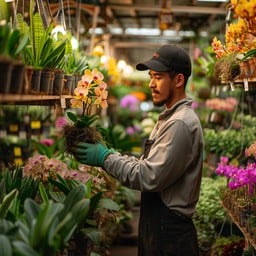



Gardening with exotic flowers requires special attention to replicate the conditions of their native habitats. Start by researching the specific needs of your chosen plants, as exotic flowers often have unique requirements for light, water, soil, and temperature. Many, such as orchids and hibiscus, thrive in well-draining soil enriched with organic matter. If planting in containers, use a potting mix suited to the species, like bark-based mixes for orchids or sandy soil for desert blooms. Pay attention to lighting preferences—some exotic flowers need full sun, like birds of paradise, while others prefer filtered or indirect light. Watering should be consistent but not excessive, as many exotic flowers are sensitive to overwatering. Ensure the topsoil dries slightly between waterings to avoid root rot.
Temperature and humidity play a vital role in maintaining exotic flowers, especially for tropical species. They flourish in warm, stable environments with high humidity, making them ideal for greenhouses or humid indoor spaces in cooler climates. Consider misting plants or using a humidifier to maintain moisture levels, particularly during dry seasons. Additionally, regular care, such as pruning dead foliage and applying flower-specific fertilizers during the growing season, will promote healthy growth and vibrant blooms. With thoughtful planning and dedicated care, exotic flowers can transform your garden into a captivating tropical retreat.



